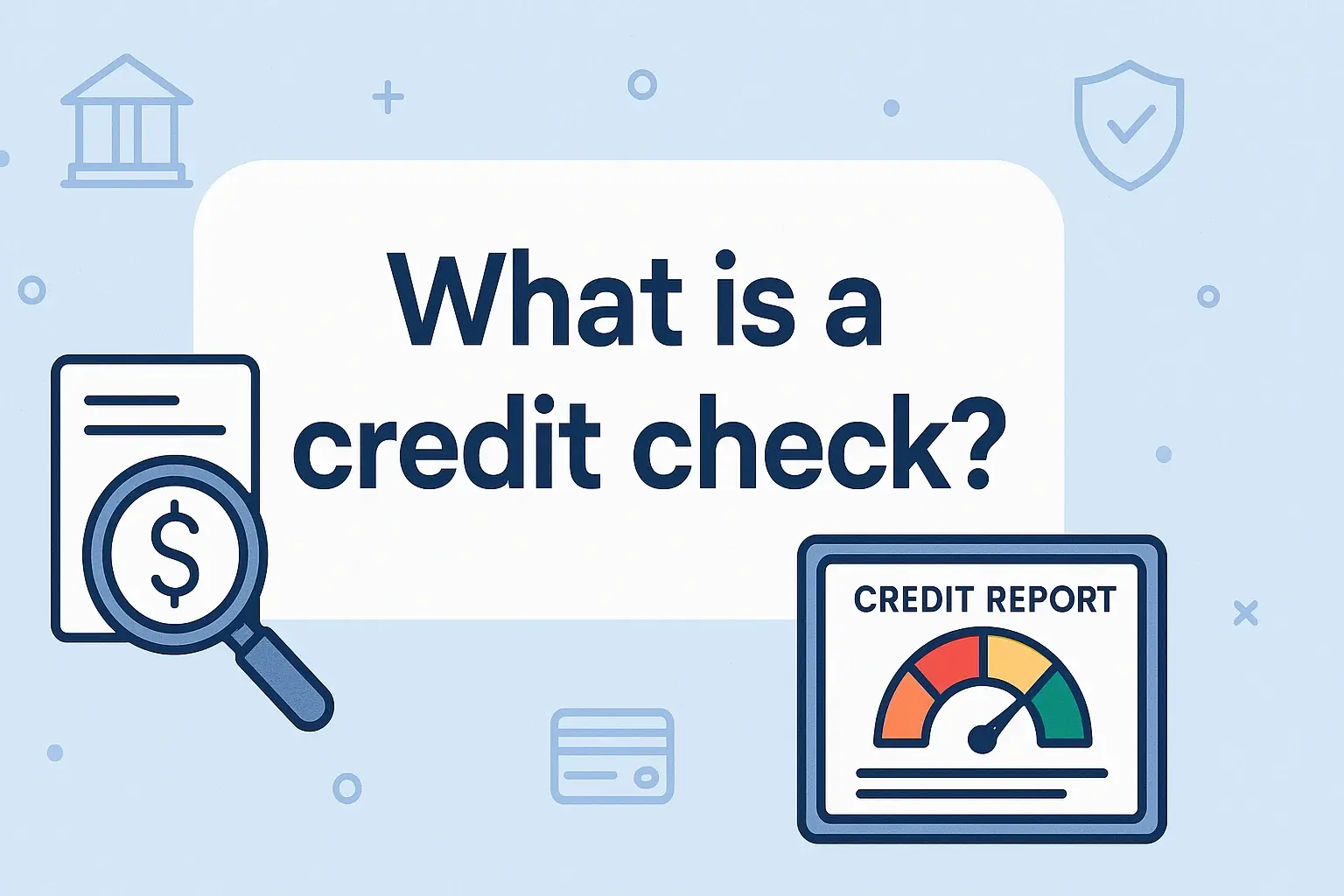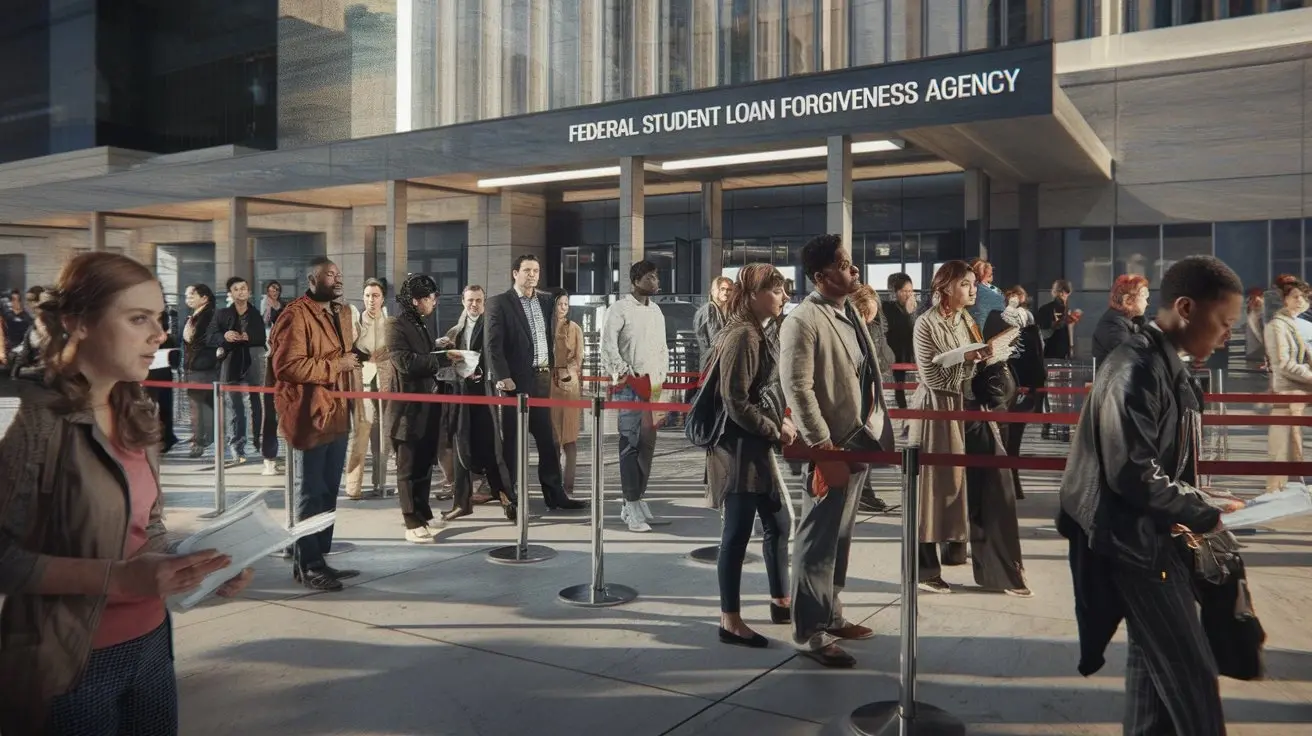-
Posted on: 21 Dec 2022

-
Tired of seeing low credit scores hold you back? This guide provides 10 actionable steps to fix your credit fast, empowering you to achieve financial freedom sooner. Learn how to improve your creditworthiness effectively and efficiently.
Understanding Your Credit Score
Before diving into the "how-to," it's crucial to grasp what a credit score is and why it matters. Your credit score is a three-digit number, typically ranging from 300 to 850, that lenders use to assess your creditworthiness. It's a snapshot of your financial behavior, indicating how likely you are to repay borrowed money. A higher score signals lower risk to lenders, translating into better loan terms, lower interest rates, and easier approval for mortgages, car loans, and even rental applications. In 2025, the average credit score in the U.S. hovers around 715, but this figure can vary significantly based on demographics and financial habits. Understanding the factors that influence your score is the first step towards improving it.
The FICO Score Model: A Closer Look
The most widely used credit scoring model is FICO. FICO scores are calculated based on five key categories, each with a different weight:
- Payment History (35%): This is the most critical factor. It reflects whether you pay your bills on time. Late payments, defaults, bankruptcies, and collections significantly damage this category.
- Amounts Owed (30%): This refers to your credit utilization ratio – the amount of credit you're using compared to your total available credit. Keeping this ratio low is vital.
- Length of Credit History (15%): A longer history of responsible credit use generally results in a higher score. This includes the age of your oldest account, newest account, and the average age of all your accounts.
- Credit Mix (10%): Having a mix of different credit types (e.g., credit cards, installment loans like mortgages or car loans) can be beneficial, but it's less impactful than payment history or utilization.
- New Credit (10%): Opening multiple new credit accounts in a short period can lower your score, as it suggests higher risk.
Understanding these components allows you to focus your efforts on the areas that will yield the most significant improvements. For instance, neglecting payment history will undermine any progress made in other areas.
The Foundation: Your Credit Report
Your credit score is derived from the information contained in your credit reports. These reports are compiled by three major credit bureaus: Equifax, Experian, and TransUnion. Each bureau maintains its own version of your credit history, which may contain slight differences. Your credit report details your:
- Personal identifying information (name, address, Social Security number).
- Credit accounts (credit cards, loans, mortgages).
- Payment history for each account.
- Public records (bankruptcies, liens, judgments).
- Inquiries (when lenders or others access your credit report).
The accuracy of your credit report is paramount. Errors can artificially lower your score, preventing you from accessing the credit you deserve. Therefore, the initial steps in any credit repair journey involve obtaining and meticulously reviewing these reports.
Step 1: Pull Your Credit Reports
The first and most critical step in fixing your credit fast is to understand exactly where you stand. This means obtaining copies of your credit reports from all three major credit bureaus: Equifax, Experian, and TransUnion. Fortunately, federal law mandates that you are entitled to one free credit report from each bureau every 12 months. You can access these free reports through the official website, AnnualCreditReport.com. This is the only legitimate source for your free reports. Avoid third-party sites that may charge fees or offer misleading services. In 2025, the importance of this step cannot be overstated, as it lays the groundwork for all subsequent actions. Take the time to download and save digital copies or print them out for easy review. Ensure you are accessing reports from all three bureaus, as they may contain different information.
Why All Three Reports Matter
It's a common misconception that credit reports are identical. However, lenders may report to different bureaus, and errors can appear on one report but not others. For example, a late payment might be accurately reported by Experian but missed by Equifax. By reviewing all three, you ensure a comprehensive understanding of your credit profile and catch any discrepancies across the board. This diligence is key to a truly effective credit repair strategy. In 2025, with the increasing complexity of data reporting, this multi-bureau approach is more vital than ever.
Step 2: Dispute Errors Aggressively
Once you have your credit reports in hand, scrutinize them for any inaccuracies. Common errors include incorrect personal information, accounts that aren't yours, incorrect late payment notations, duplicate accounts, or outdated negative information that should have been removed. According to the Consumer Financial Protection Bureau (CFPB), a significant percentage of credit reports contain errors. If you find any discrepancies, you have the right to dispute them with the credit bureau and the creditor that provided the information. The process for disputing is outlined on each credit bureau's website. You can typically submit disputes online, by mail, or by phone. For maximum impact, submit your disputes in writing (certified mail is recommended) and keep meticulous records of all correspondence. The credit bureaus have 30 days (or 45 days if you submit the dispute within 30 days of receiving a new report) to investigate your claim. If the information is found to be inaccurate, it must be corrected or removed. This is a powerful tool for fast credit repair, as removing negative items can significantly boost your score.
What Constitutes a Disputable Error?
Not every piece of information you dislike is an error. Disputable errors include:
- Personal information that is incorrect (e.g., wrong address, misspelled name).
- Accounts that you did not open or authorize.
- Payments that were made on time but are listed as late.
- Accounts that are listed as delinquent but were paid off.
- Negative information that is older than the legally allowed reporting period (typically seven years, or ten years for bankruptcy).
- Incorrect balances or credit limits.
Be prepared to provide supporting documentation for your disputes, such as payment confirmations, account statements, or identification documents. The more evidence you provide, the stronger your case will be. In 2025, online dispute portals have become more streamlined, but a paper trail remains invaluable.
Step 3: Master On-Time Payments
Payment history is the single most significant factor influencing your credit score, accounting for approximately 35% of the FICO score calculation. Therefore, ensuring every single bill is paid on time, every time, is non-negotiable for fast credit repair. Even a single late payment can cause a substantial drop in your score. If you have a history of late payments, focus on establishing a consistent record of timely payments moving forward. This means paying not just your credit card bills, but also your mortgage, auto loans, student loans, rent (if reported), and any other recurring financial obligations. Automating payments through your bank or setting up calendar reminders can be incredibly helpful. If you've missed a payment recently, contact the creditor immediately to make arrangements and prevent it from being reported as late.
Strategies for Consistent On-Time Payments
If managing multiple due dates is a challenge, consider these strategies:
- Set Up Automatic Payments: Most creditors allow you to set up automatic payments from your bank account. Ensure you have sufficient funds to cover the payment to avoid overdraft fees.
- Use Calendar Reminders: Set up recurring reminders on your phone or digital calendar a few days before each bill is due.
- Align Due Dates: If possible, contact your creditors and request to align your payment due dates to a specific day of the month that works best for your budget.
- Budgeting: Create a detailed budget to ensure you allocate funds for all your bills. Knowing exactly how much you need to set aside each month for debt repayment is crucial.
- Payment Apps: Utilize budgeting and payment apps that can track due dates and facilitate payments.
By prioritizing on-time payments, you are actively building a positive payment history, which is the bedrock of a strong credit score. In 2025, the digital tools available make this easier than ever, but discipline remains key.
Step 4: Slash Credit Utilization
Credit utilization ratio (CUR) is the second most important factor in your credit score, accounting for about 30%. It measures the amount of revolving credit you're using compared to your total available revolving credit. For example, if you have a credit card with a $10,000 limit and a balance of $3,000, your utilization is 30%. Experts generally recommend keeping your CUR below 30%, but ideally below 10%, for the best impact on your score. High utilization signals to lenders that you may be overextended and at a higher risk of defaulting. To fix your credit fast, aggressively reducing your CUR is essential.
Tactics to Lower Credit Utilization
Here are effective ways to lower your credit utilization:
- Pay Down Balances: The most direct way is to pay down your credit card balances. Focus on cards with the highest utilization first. Even making multiple payments throughout the month can help keep your reported balance lower.
- Increase Credit Limits: Contact your credit card issuers and request a credit limit increase. If approved, your utilization ratio will decrease, assuming your balance remains the same. Be cautious not to increase spending if you get a higher limit.
- Balance Transfers: Consider transferring high-interest balances to a new card with a 0% introductory APR. This can help you pay down the debt faster without incurring additional interest, but ensure you understand the terms and fees.
- Avoid Maxing Out Cards: Never max out your credit cards, as this dramatically impacts your utilization ratio.
- Strategic Payments: Pay down balances before the statement closing date. The balance reported to the credit bureaus is typically the one on your statement, not your current balance.
For instance, if you have a $5,000 balance on a card with a $10,000 limit (50% utilization), paying it down to $1,000 would bring your utilization to 10%, a significant improvement. In 2025, many credit card companies offer tools to track your utilization in real-time, making it easier to manage.
Step 5: Strategize Debt Settlement
If you have significant outstanding debts, particularly those in collections or past due, strategizing how to address them is crucial. While paying off debt is ideal, for accounts that are severely delinquent or in collections, debt settlement might be an option. Debt settlement involves negotiating with creditors to pay a lump sum that is less than the full amount owed in exchange for the debt being considered paid in full. This process can negatively impact your credit score in the short term (as it's often marked as "settled for less than full amount"), but it can be a faster way to remove the negative mark from your report compared to letting it age for seven years. However, it's a complex process and should be approached with caution. It's often best to consult with a reputable non-profit credit counseling agency before pursuing debt settlement.
Debt Settlement vs. Debt Payoff
Here's a comparison:
Feature Debt Payoff Debt Settlement Goal Pay the full amount owed. Negotiate to pay a reduced amount. Credit Impact (Short-term) Neutral to positive (as balances decrease). Negative (marked as "settled"). Credit Impact (Long-term) Highly positive (removes debt). Less positive than full payoff, but removes the debt from the report sooner. Negotiation Required No. Yes, often involves negotiation. Best For Accounts in good standing or slightly delinquent. Severely delinquent accounts, accounts in collections. It's important to note that debt settlement companies often charge significant fees and may not always be successful. Always do thorough research and understand the implications before agreeing to any settlement. In 2025, regulatory oversight on debt settlement companies is stricter, but due diligence is still essential.
Step 6: Halt New Debt Accumulation
While you're working on fixing your existing credit issues, it's imperative to avoid taking on any new debt. Opening new credit accounts, even if you intend to use them responsibly, can temporarily lower your credit score due to the hard inquiry on your report and the reduction in the average age of your accounts. Furthermore, if you're struggling with existing debt, adding more debt will only exacerbate the problem and hinder your progress. This means resisting the urge to apply for new credit cards, personal loans, or car loans unless absolutely necessary. Focus all your financial energy on managing and reducing your current obligations. This discipline is a cornerstone of rapid credit improvement. In 2025, the allure of "buy now, pay later" schemes is strong, but these can also contribute to debt accumulation and should be approached with extreme caution.
The Impact of New Credit
When you apply for credit, the lender performs a "hard inquiry" on your credit report. Multiple hard inquiries within a short period can signal to lenders that you are in financial distress and are a higher risk. While a single inquiry has a minor impact, a flurry of them can shave points off your score. Additionally, opening a new account reduces the average age of your credit history, which is another factor in credit scoring. For fast credit repair, it's best to let your existing accounts age and focus on managing them responsibly.
Step 7: Consider Authorized User Status
One potentially quick way to improve your credit score is by becoming an authorized user on a credit card account held by someone with excellent credit. When you are added as an authorized user, the primary cardholder's positive payment history and low credit utilization on that account can be reflected on your credit report. This can provide a significant boost, especially if your own credit history is thin or damaged. However, this strategy comes with risks. The primary cardholder's positive behavior is key; if they miss payments or carry high balances, it will negatively impact your credit. Furthermore, not all credit card issuers report authorized user activity to the credit bureaus, so it's essential to confirm this beforehand. In 2025, some issuers have specific policies regarding authorized user reporting, so verification is critical.
Choosing the Right Primary Cardholder
If you decide to pursue this route, choose someone you trust implicitly and who has a stellar credit history. This person should:
- Have a long history of on-time payments.
- Maintain very low credit utilization on their accounts.
- Have a good mix of credit.
- Have a strong overall credit score (typically 700+).
Ensure you have a clear understanding of how the account will be managed and that the primary cardholder is aware of the potential impact on your credit. It's a symbiotic relationship that requires trust and responsibility from both parties.
Step 8: Secure Credit-Building Tools
If you have a limited credit history or are rebuilding from scratch, traditional credit products might be hard to obtain. Fortunately, several tools are specifically designed to help individuals build or rebuild credit. These include:
- Secured Credit Cards: These cards require a cash deposit that typically equals your credit limit. The deposit acts as collateral, making them less risky for lenders. Responsible use of a secured card (making on-time payments and keeping balances low) will be reported to credit bureaus and help build your credit history.
- Credit-Builder Loans: These are small loans offered by some banks and credit unions. The loan amount is held in a savings account while you make payments. Once the loan is fully repaid, you receive the money, and your on-time payments are reported to credit bureaus.
- Rent and Utility Reporting Services: Services like Experian Boost or others allow you to add positive payment history for rent, utilities, and even streaming services to your credit report. This can be particularly helpful for individuals who don't have many traditional credit accounts.
By strategically using these tools, you can actively demonstrate responsible financial behavior to credit bureaus, thereby improving your credit score over time. In 2025, the availability and accessibility of these tools have expanded significantly, offering more pathways for credit building.
Secured Cards vs. Credit-Builder Loans
Here's a brief comparison:
Feature Secured Credit Card Credit-Builder Loan Purpose Revolving credit for everyday purchases. Installment loan for building credit history. Collateral Cash deposit. Loan amount held in savings. Reporting Payment history, utilization. Payment history. Accessibility Generally easier to obtain than unsecured cards. Offered by many banks and credit unions. Benefit Builds revolving credit history, can eventually convert to unsecured. Builds installment loan history, funds released upon repayment. Choosing the right tool depends on your specific needs and credit situation. For fast credit repair, consistent, on-time payments on any of these instruments are key.
Step 9: Monitor Your Progress Diligently
Credit repair is not a set-it-and-forget-it process. To ensure your efforts are paying off and to catch any new issues that may arise, consistent monitoring of your credit reports and scores is essential. Many financial institutions and credit monitoring services offer free access to your credit score, and some even provide alerts for significant changes to your credit report. Regularly reviewing your reports (even between your free annual checks) allows you to identify any new errors or fraudulent activity promptly. Seeing your score improve can also be a great motivator to stay on track. Aim to check your credit score at least monthly and pull your full credit reports annually from each bureau. In 2025, sophisticated credit monitoring apps provide real-time updates and detailed insights, making this step more accessible than ever.
What to Look For During Monitoring
When monitoring your credit, pay attention to:
- Score Changes: Note any significant increases or decreases in your credit score and try to correlate them with your actions or new credit activity.
- New Accounts: Ensure no new accounts have been opened on your report without your knowledge.
- Inquiries: Track the number of hard inquiries. A sudden increase might indicate a problem.
- Account Status: Verify that all your accounts are being reported accurately, especially payment statuses and balances.
- Public Records: Check for any new public records like liens or judgments.
Proactive monitoring helps you stay in control of your financial health and ensures that your credit repair journey remains on the right path.
Step 10: Seek Professional Guidance if Needed
While many credit repair tasks can be handled independently, there are times when professional assistance is beneficial. If your credit situation is complex, involving significant debt, multiple collections, or a history of identity theft, a reputable credit counseling agency or a qualified credit repair professional can offer invaluable guidance. Non-profit credit counseling agencies, accredited by organizations like the Better Business Bureau (BBB) or the National Foundation for Credit Counseling (NFCC), can help you create a debt management plan, negotiate with creditors, and provide education on financial management. Be wary of for-profit credit repair companies that make unrealistic promises or charge hefty upfront fees. Always research any company thoroughly and ensure they are legitimate and transparent. In 2025, the landscape of credit repair services is vast, so discerning reputable help is crucial.
When to Consider Professional Help
You might benefit from professional guidance if:
- You have a large amount of debt that feels unmanageable.
- You are facing aggressive collection actions.
- You suspect identity theft.
- You have tried various methods without seeing significant improvement.
- You need help understanding complex credit laws or negotiation strategies.
Remember, the goal is to empower yourself with knowledge and tools. Professional help should be an extension of your efforts, not a replacement for your active participation in managing your finances.
Key Takeaways for Fast Credit Repair
Fixing your credit fast is achievable with a strategic and disciplined approach. By diligently following these 10 steps, you can significantly improve your creditworthiness in a shorter timeframe. The foundation lies in understanding your credit reports, aggressively disputing any errors, and prioritizing on-time payments above all else. Reducing your credit utilization ratio is another powerful lever for rapid score improvement. While addressing existing debt through payoff or strategic settlement is vital, halting the accumulation of new debt is equally crucial. Tools like becoming an authorized user or utilizing credit-building products can accelerate your progress, especially for those with limited credit history. Consistent monitoring ensures you stay on track and catch any issues early. Finally, don't hesitate to seek professional guidance when needed. Remember, consistent positive financial behavior is the ultimate key to building and maintaining excellent credit.
In 2025, the financial landscape continues to evolve, but the core principles of credit management remain constant. By implementing these strategies with focus and persistence, you can unlock better financial opportunities, achieve your goals, and enjoy the peace of mind that comes with a strong credit score. Start today, and take control of your financial future.











